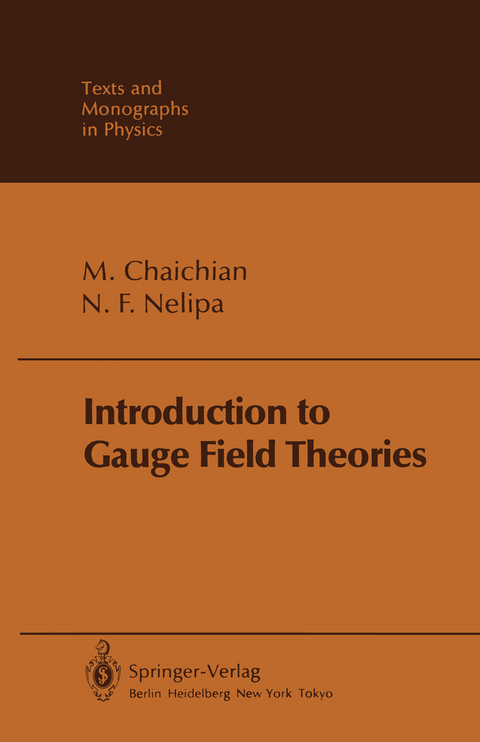
Introduction to Gauge Field Theories
Springer Berlin (Verlag)
978-3-642-82179-0 (ISBN)
Units and Notation.- I Invariant Lagrangians.- 1. Global Invariance.- 2. Local (Gauge) Invariance.- 3. Spontaneous Symmetry-Breaking.- II Quantum Theory of Gauge Fields.- 4. Path Integrals and Transition Amplitudes.- 5. Covariant Perturbation Theory.- III Gauge Theory of Electroweak Interactions.- 6. Lagrangians of the Electroweak Interactions.- 7. Quantum Electrodynamics.- 8. Weak Interactions.- 9. Higher Orders in Perturbation Theory.- IV Gauge Theory of Strong Interactions.- 10. Asymptotically Free Theories.- 11. Dynamical Structure of Hadrons.- 12. Quantum Chromodynamics. Perturbation Theory.- 13. Lattice Gauge Theories. Quantum Chromodynamics on a Lattice.- 14. Grand Unification.- 15. Topological Solitons and Instantons.- 16. Conclusion.- List of Symbols.
| Erscheint lt. Verlag | 12.2.2012 |
|---|---|
| Reihe/Serie | Theoretical and Mathematical Physics |
| Übersetzer | J. Estrin |
| Zusatzinfo | XII, 332 p. |
| Verlagsort | Berlin |
| Sprache | englisch |
| Maße | 155 x 235 mm |
| Gewicht | 527 g |
| Themenwelt | Naturwissenschaften ► Physik / Astronomie ► Atom- / Kern- / Molekularphysik |
| Naturwissenschaften ► Physik / Astronomie ► Hochenergiephysik / Teilchenphysik | |
| Naturwissenschaften ► Physik / Astronomie ► Quantenphysik | |
| Naturwissenschaften ► Physik / Astronomie ► Theoretische Physik | |
| Schlagworte | Elementary Particle Physics • Field Theory • Mathematica • Particle physics • Quantum Theory • Theories |
| ISBN-10 | 3-642-82179-0 / 3642821790 |
| ISBN-13 | 978-3-642-82179-0 / 9783642821790 |
| Zustand | Neuware |
| Informationen gemäß Produktsicherheitsverordnung (GPSR) | |
| Haben Sie eine Frage zum Produkt? |
aus dem Bereich


